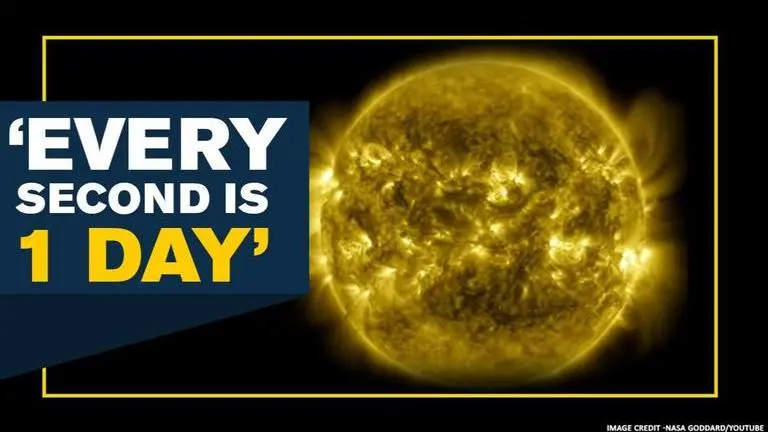Updated 26 June 2020 at 20:10 IST
NASA releases stunning 10-year time-lapse of Sun, watch incredible video
The instrument, SDO, captured the image of the blazing Sun every 0.75 seconds, outperforming the Atmospheric Imaging Assembly (AIA) instrument, NASA said.
- Science News
- 2 min read

Capturing 10 years of the 4.6 billion-year-old Sun in an hour and a half, NASA, on June 24 released a time-lapse video recorded from NASA's Solar Dynamics Observatory (SDO) that had been “watching the Sun non-stop for over a full decade”. The Solar Dynamics Observatory SDO gathered 425 million high-resolution images of the Sun, approximately 20 million gigabytes of data over the past 10 years which the NASA compiled in footage and released on its official website. In the footage captured between June 2, 2010, to June 1, 2020, NASA revealed that each day for the sun is every second on the video. Further, NASA titled the footage as “A Decade of Sun”.
“This information has enabled countless new discoveries about the workings of our closest star and how it influences the solar system,” NASA said. The instrument, SDO, captured the image of the blazing Sun every 0.75 seconds, outperforming the Atmospheric Imaging Assembly (AIA) instrument capable of recording images every 12 seconds at 10 different wavelengths of light. “This 10-year time-lapse showcases photos taken at a wavelength of 17.1 nanometres, which is an extreme ultraviolet wavelength that shows the Sun’s outermost atmospheric layer – the corona,” NASA wrote, explaining the phenomenon.
Sun’s 11-year solar cycle and notable events
With the custom music, titled “Solar Observer,” which was composed by musician Lars Leonhard, the footage condensed a full decade of the sun into nearly 61 minutes, while one photo was compiled of several pictures every hour. According to NASA, the footage portrays “the rise and fall in an activity that occurs as part of the Sun’s 11-year solar cycle and notable events, like transiting planets and eruptions.”
Advertisement
In the last decade when astronomers recorded the phenomenon, the gigantic Sun had undergone an impact as it bubbled with the enormous magnetic ripples known as sunspots, which peaked around 2014 and eventually subsided, according to the space agency. Further, the Sun rearranged its magnetic poles every 11 years, replacing North with South and vice-versa. As a result of this, the surface of the Sun appeared to be a tranquil sea of yellow fire, a period known as a solar minimum by the Astronomers, which currently the Sun is in. While these changes are difficult to observe with the naked human eye, NASA's SDO satellite captured it in extreme ultraviolet radiation.
Advertisement
(Images: NASA)
Published By : Zaini Majeed
Published On: 26 June 2020 at 20:10 IST




